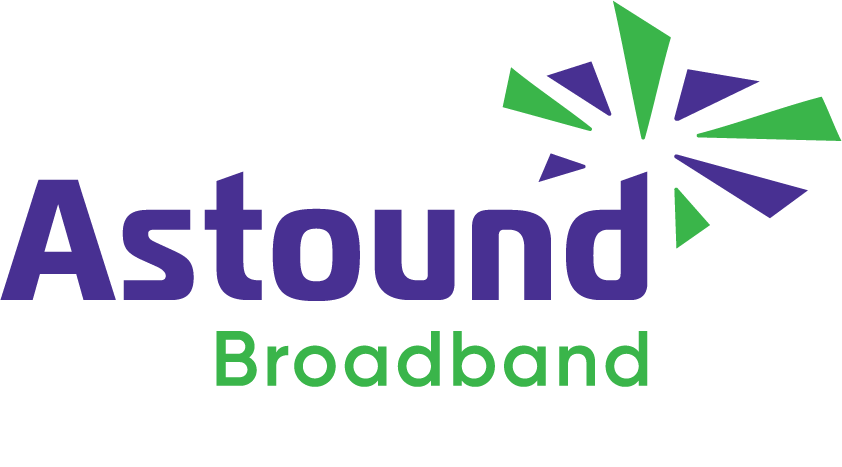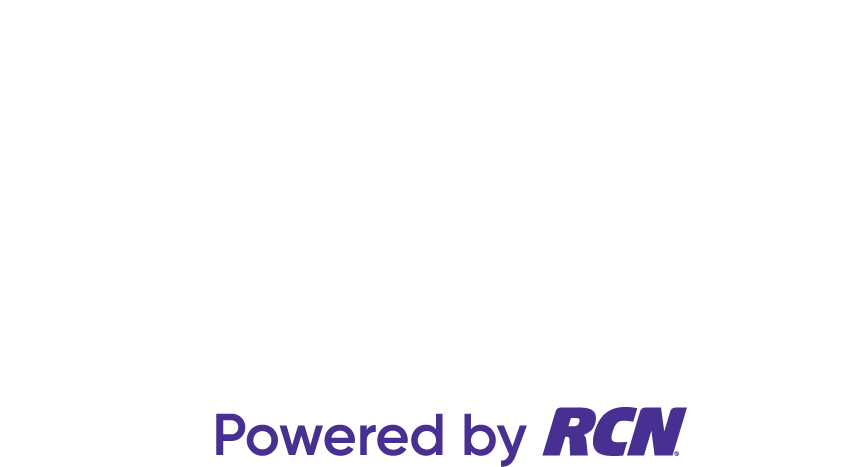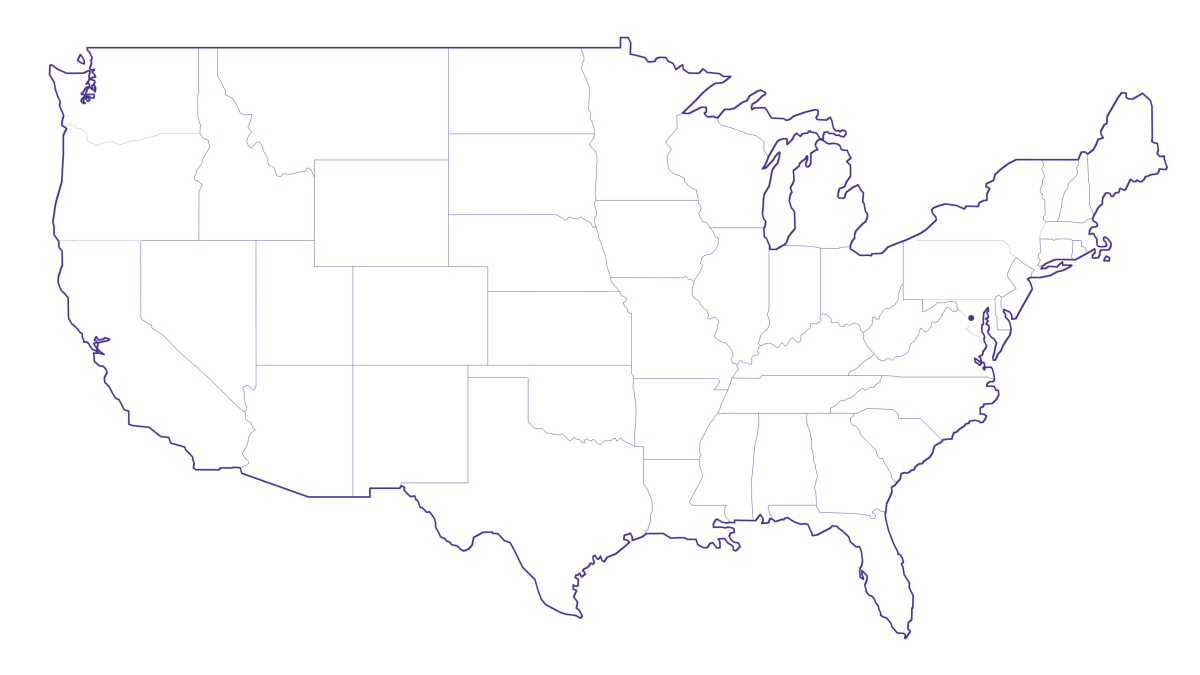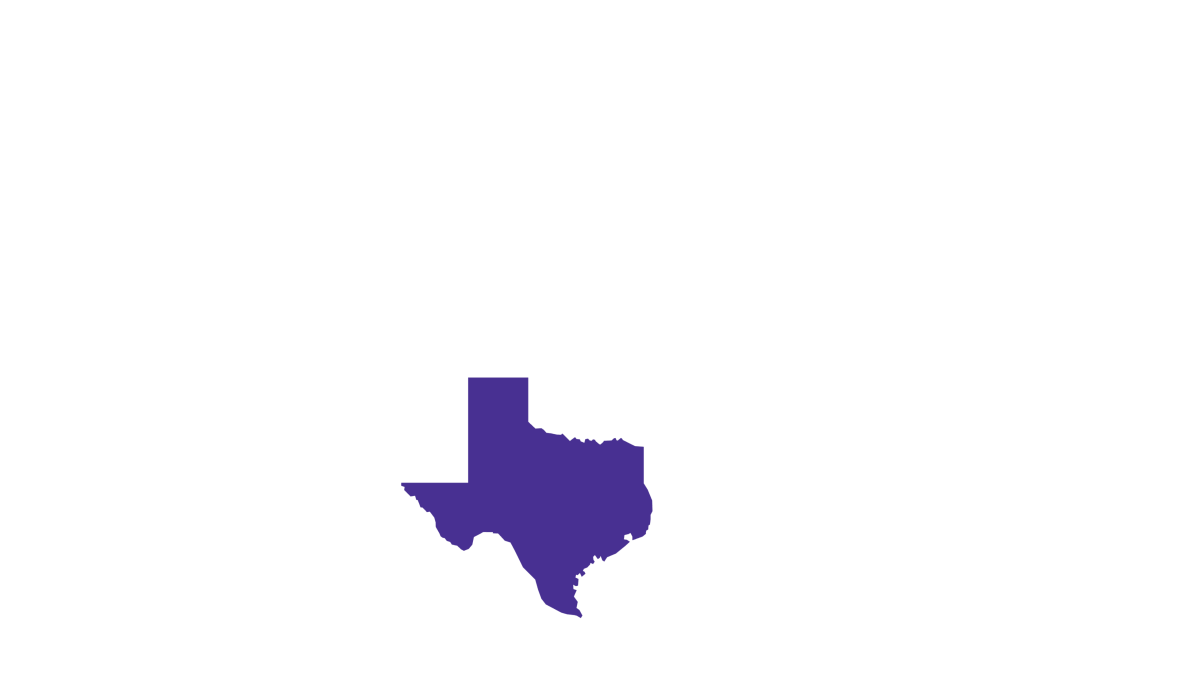What is fiber internet?
(and what are the benefits?)

A fiber internet connection offers five main advantages: faster speeds, greater reliability, lower latency, improved online gaming and support for future technologies. That means you can stream, work, video chat and game on your home WiFi without interruptions.
And that’s why more households across the U.S. are making the switch. In 2025, fiber is available to over 76 million homes, and nearly half of those choose fiber once it’s offered by internet providers in their neighborhood. With families relying on more devices, heavier streaming, remote work and online gaming, demand for stronger connections continues to grow. Average household data use has increased to ~660 GB per month, with many already exceeding 1 – 2 TB.
Astound’s internet plans deliver the speed and bandwidth to support the way many Americans use the internet today, and ensure your home is ready for whatever comes next.
Want consistent internet speeds that allow multiple people to use many devices at the same time? You might be asking yourself, “Do I really need fiber internet?” or wondering if it’s the right fit for your home.
Choosing the wrong type of internet technology can lead to slow speeds and frequent disruptions that waste your time. Switch to Astound, and we’ll help strengthen your home network and make sure you get the most out of your internet connection.
What is fiber internet?
What does fiber internet mean? Fiber internet connections are a type of broadband service that transmits data through insulated fiber optic cables. These cables are made up of extremely thin strands of glass or plastic, each about the width of a human hair. Instead of sending electrical signals like traditional copper wires, fiber uses pulses of light to carry information, allowing data to move at nearly the speed of light.
Because light encounters less resistance than electricity traveling through metal, fiber can transmit data over long distances with very little signal loss, latency or interference. This makes it more reliable than cable or DSL connections, especially during peak usage times.
With the ability to deliver speeds of 1 Gigabit per second (Gbps) and beyond, fiber provides the fastest and most consistent broadband internet available today, making it ideal for wireless streaming in 4K, online gaming, video conferencing and powering multiple devices at once.
What's the difference between fiber internet and cable internet?
Cable internet transmits data over copper wires, which lose strength over distance and can cause slower speeds. Conversely, fiber uses light signals through thin glass strands, carrying data farther with less interference. This efficiency gives fiber a much greater capacity for higher speeds.
Fiber-powered internet
Why Fiber Internet works better
Astound’s fiber-powered internet provides consistent speeds throughout the day versus 5G Home Internet which is prone to intermittency.
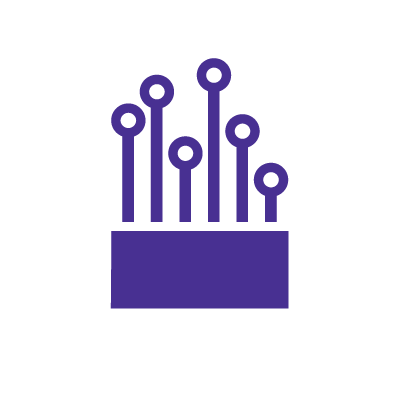
Fiber to the home technology (FTTH)
Fiber to the home (FTTH) is the gold standard of fiber internet. With FTTH, the fiber optic line runs directly from the fiber internet providers all the way to your residence, without relying on older copper wiring for the final stretch. This end-to-end connection means you get the full benefits of the technology: ultra-fast speeds, unmatched reliability and minimal signal loss.
Unlike other internet types that often have much slower upload speeds compared to downloads, FTTH delivers symmetrical speeds, meaning uploads are just as fast as downloads. This is especially valuable for video conferencing, cloud backups, online gaming and households where multiple people are competing for bandwidth. Because it’s less affected by distance or electrical interference, FTTH also provides a steadier, more consistent connection than cable or DSL.
The history of fiber optics
Fiber optic technology emerged in the 1970s as a faster, more reliable alternative to copper. By the 1980s it was powering telecom networks, and undersea cables soon linked the U.S. and Europe. In the 1990s fiber became the backbone of the internet, enabling the tech boom, and by the 2000s it began reaching homes and businesses directly.
Today it continues to expand, providing the capacity needed for modern data use and future growth.
FIBER-POWERED GIG INTERNET
Gig+ speeds, unbeatable value
Get Gig speeds up to 1500* Mbps starting at $60/mo on Astound’s ultra-reliable fiber-powered‡ network.

How fast is fiber internet?
Fiber internet is significantly faster than cable or DSL. The table below shows how long it takes to download different types of files on each connection, highlighting the performance advantage of fiber.
| Item being downloaded | Approximate file size | 1 Gig fiber connection | 100 Mbps cable connection | 25 Mbps DSL connection |
|---|---|---|---|---|
| 4 minute song | 4 MB | 0.04 seconds | 0.34 seconds | 1.34 seconds |
| 10 hour audio book | 120 MB | 1 second | 10 seconds | 40 seconds |
| 45 minute TV show | 200 MB | 1 - 2 seconds | 17 seconds | 1 minutes and 7 seconds |
| 2 hour movie | 1.5 GB | 14 seconds | 2 minutes and 8 seconds | 8 minutes and 35 seconds |
| 2 hour HD movie | 4.5 GB | 41 seconds | 6 minutes and 26 seconds | 25 minutes and 46 seconds |
|
Item being downloaded
4 minute song |
Approximate file size
4 MB |
1 Gig fiber connection
0.04 seconds |
100 Mbps cable connection
0.34 seconds |
25 Mbps DSL connection
1.34 seconds |
|
Item being downloaded
10 hour audio book |
Approximate file size
120 MB |
1 Gig fiber connection
1 second |
100 Mbps cable connection
10 seconds |
25 Mbps DSL connection
40 seconds |
|
Item being downloaded
45 minute TV show |
Approximate file size
200 MB |
1 Gig fiber connection
1 - 2 seconds |
100 Mbps cable connection
17 seconds |
25 Mbps DSL connection
1 minutes and 7 seconds |
|
Item being downloaded
2 hour movie |
Approximate file size
1.5 GB |
1 Gig fiber connection
14 seconds |
100 Mbps cable connection
2 minutes and 8 seconds |
25 Mbps DSL connection
8 minutes and 35 seconds |
|
Item being downloaded
2 hour HD movie |
Approximate file size
4.5 GB |
1 Gig fiber connection
41 seconds |
100 Mbps cable connection
6 minutes and 26 seconds |
25 Mbps DSL connection
25 minutes and 46 seconds |
How does fiber optic internet work?
Fiber optic signals—pulses of light—are transmitted through fiber optic cable technology from your provider’s network directly to your premises. At your home or business, these light signals are received by a device called an Optical Network Terminal (ONT), which converts them into electrical signals (like Ethernet) that everyday devices and routers can use.
Because this conversion happens right at your location, rather than miles away, it preserves speed, bandwidth and stability. Placing the ONT at the edge of the provider’s network, and physically close to the end user, is one of the key reasons fiber maintains its low latency and high reliability.
Check for service
Get internet service that delights
Astound is ranked among the best for overall satisfaction*. When it comes to download speed and quality, Astound more than delivers.

Top 5 benefits of fiber internet explained
Fiber internet plans offer advantages over cable and DSL. Fiber’s design allows for faster speeds, more consistent reliability and stronger broadband performance when multiple devices are connected. The sections below explain how fiber compares to other connection types in each of these areas.
1. Increased speeds
Astound offers Gigabit-speed internet, with plans up to 1 Gigabit per second (1,000 Mbps) available in many areas. In select regions, customers can access even faster options, with speeds ranging from 1.2 Gig to 2 Gig and beyond. To get started, check fiber availability in your area.
2. Greater reliability
Fiber optic cables are built to be highly durable. Their design makes them resistant to electromagnetic interference, temperature fluctuations and most weather conditions, which means fewer service interruptions. Fiber is also less prone to physical damage than copper lines and typically lasts much longer, providing a more reliable connection over time.
3. No throttling
With cable internet, speeds often slow during peak hours because bandwidth is shared among many users. Fiber internet is designed to handle more wireless traffic at much higher speeds, providing a consistent connection even when demand is high.
4. Excellent choice for gaming
Fiber internet’s combination of speed, reliability and low latency makes it one of the best options for gamers. High bandwidth ensures smooth downloads and updates, while symmetrical upload and download speeds improve performance for multiplayer and cloud-based gaming. Because fiber experiences less congestion and fewer slowdowns than cable, players benefit from more stable connections, reduced lag and faster response times. However, gamers still need to select the right internet speed for their gaming needs.
5. Supports future technologies
Fiber networks are designed with capacity well beyond today’s demands. With multi-gig speeds already available in some areas, fiber has the bandwidth to support emerging technologies like smart homes, AR/VR and cloud-based applications. That means customers can count on their connection not just for today, but for whatever comes next.

The challenges of fiber internet
According to the 2025 Fiber Broadband Association Deployment Report, fiber internet continues to expand but still faces challenges with reach, adoption and deployment hurdles.
- Limited Reach: Fiber now passes 76.5 million U.S. homes (a 13% increase in 2024), but many rural areas still lack access.
- Slow growth rates: Only 45.2% of homes with fiber available have subscribed. Some carriers have shifted their focus to 5G, which uses cell towers and eliminates the need for laying cable.
- Deployment hurdles: Permitting delays, pole access, mapping issues and labor shortages slowed growth—providers estimate rollout could have been 7% higher in 2024 without these obstacles.
Now that you’re an expert on how fiber internet works and its benefits and disadvantages, you can decide whether it’s right for you.
What equipment is needed for fiber optic internet?
To use fiber optic broadband, you’ll need a modem (often called an Optical Network Terminal, or ONT) and a router that are both compatible with fiber service. Choosing the right router is especially important, as it ensures you can take full advantage of your fiber connection and achieve the fastest speeds your plan offers.
WiFi router for fiber internet
A WiFi router is essential for getting the most out of your fiber connection. It performs two main functions: managing network traffic through IP addresses and allowing multiple devices to share the same internet connection. When choosing a router for fiber, there are a few key factors to consider.
What internet speed do you need?
When evaluating internet speed, think about both the number of devices connected and how they’re used. If your household streams movies or TV shows, works remotely or relies on multiple smart devices, you’ll need a router that can support higher bandwidth to keep everything running smoothly.
When evaluating internet speed, consider the quantity and the usage of devices you typically have connected to the internet.
How many connected devices do you have?
Along with laptops, tablets and phones, remember that many smart home devices, such as doorbell cameras, thermostats and even refrigerators, also connect to the internet and add to your household’s bandwidth needs.
What features are you looking for in a router?
Think about how you use the internet and whether you need to control how bandwidth is distributed across devices. Gamers may benefit from a router designed for gaming, which can reduce lag and optimize server connections. If you already have a strong router but still struggle with coverage in every room, consider a mesh WiFi system, like eero, to extend reliable connections throughout your home.
Now that you understand how fiber internet works, you can decide if it’s the right fit for your home. For households with many users or connected devices, fiber delivers the fastest and most reliable connection available.
Mobile + Internet + TV
Switch to Astound
Get Astound Mobile, Internet and TV—and save on the best services available.
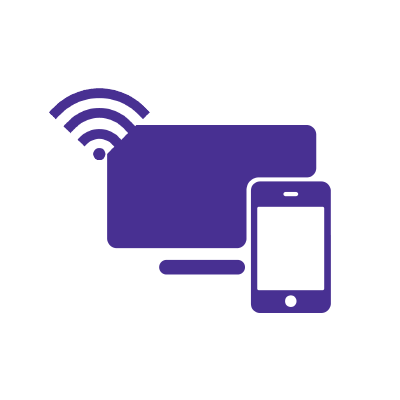
Frequently asked questions
Does fiber internet increase upload and download speeds?
Yes. Fiber optic internet is the fastest and most reliable option for home use, offering high speed access for gaming, video streaming, video conferencing and more. Unlike cable or DSL, fiber delivers equally fast upload and download speeds, making it ideal for households that both consume and create content online.
Do you need fiber internet for symmetrical speeds?
No. Some providers offer symmetrical speeds on other technologies, but fiber is the most common and widely available way to get consistently equal upload and download speeds.
How do you get fiber internet for your home?
Start by checking for availability of fiber service in your area. If it is, an Astound representative can walk you through your options, answer your questions and help set up the right plan for your household.
How much does fiber internet cost?
The monthly cost of fiber internet depends on your location and the plans available in your area. While it may cost slightly more than cable or DSL, fiber provides faster speeds, supports more devices at once and delivers more reliable service.
Can I get fiber internet for my business?
Astound Broadband offers fiber internet plans designed for businesses of all sizes, whether you’re working from a traditional office or a home office. Our high speed business internet delivers the speed and reliability you need to stay connected and productive. Explore high speed internet plans for your business.
Create the perfect bundle
Get the speed, WiFi, mobile and TV that’s just right for you.
While we have made every attempt to ensure that the information contained in this site has been obtained from reliable sources, Astound is not responsible for any errors or omissions, or for the results obtained from the use of this information. All information in this site is provided “as is”, with no guarantee of completeness, accuracy, timeliness and without warranty of any kind, express or implied, including, but not limited to warranties of performance, merchantability and fitness for a particular purpose. Certain links in this site connect to other websites maintained by third parties over whom Astound has no control. Astound makes no representations as to the accuracy or any other aspect of information contained in other websites.
Currently the Motorola MB8600 DOCSIS 3.1 is known to have problems connecting to the Astound Broadband network. Additionally, EURODOCSIS cable modems are not supported in the United States.
Reminder: Internet download speeds may vary and are not guaranteed. Observed speeds may vary by customer based on device, connection, & other factors outside of Astound Broadband’s control.*
